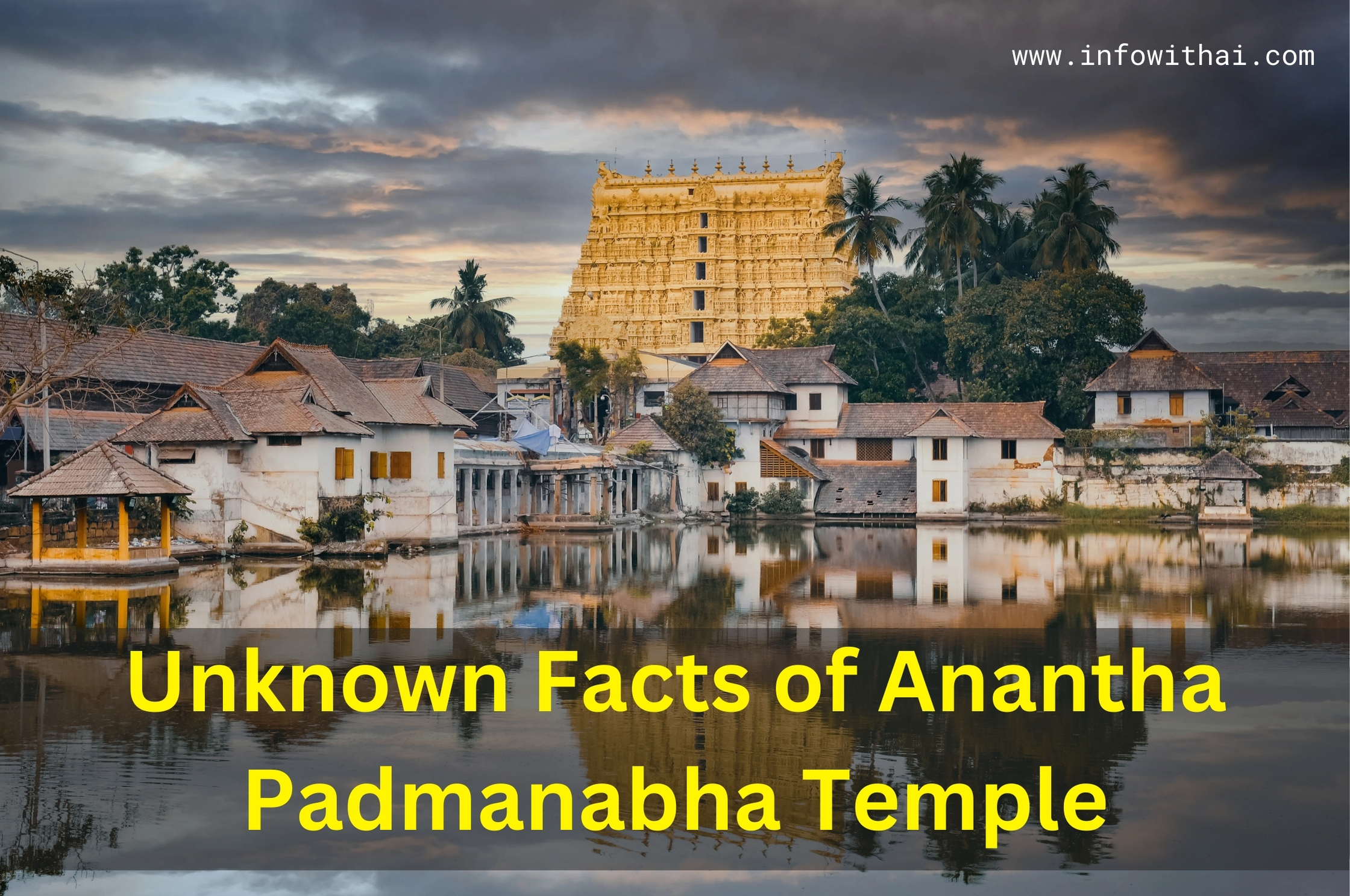The Anantha Padmanabha Temple, located in Thiruvananthapuram, Kerala, is renowned for its mysterious vaults, impressive architecture, and deep spiritual significance. Dedicated to Lord Vishnu, this ancient temple holds several secrets and lesser-known facts that captivate visitors and devotees alike. Here’s a glimpse into some of the unknown aspects of this fascinating temple.
1. The Vaults of Infinite Wealth
One of the most intriguing aspects of the Anantha Padmanabha Temple is the hidden wealth contained within its vaults. These six vaults (labeled A to F) hold treasures including gold, jewels, and artifacts believed to be worth billions. Vault B, famously known as the “forbidden vault,” has been unopened due to traditional beliefs and legends suggesting it’s protected by a divine curse.
2. The Guardian Serpent
Local legends say that the temple is guarded by a divine serpent that protects its sacred treasures and devotees. Known as Shesha Nag, the serpent is believed to watch over the temple’s wealth, ensuring it remains protected from those with ill intent. This belief emphasizes the connection between the deity, Lord Padmanabha, who rests on the serpent in a reclining posture, and his divine guardianship over the temple.
3. Architectural Marvels
The temple’s architectural style is a blend of Dravidian and traditional Kerala styles, boasting intricate stone carvings and vibrant murals. The main deity, Lord Vishnu, is depicted reclining on the serpent Adishesha, a unique iconography not commonly seen in other temples. Every aspect of the temple’s design reflects devotion and divine artistry, with several structures intricately linked to Kerala’s rich cultural heritage.
4. The Mystical Padmanabhaswamy Idol
The idol of Lord Padmanabha is made of a rare composition known as “Kadu Sarkara Yogam,” a mix of herbal substances and materials that create a mystical aura around the deity. The idol is adorned with gold and precious stones, giving it a resplendent appearance that’s revered by devotees. The composition is said to radiate positive energy, adding to the temple’s sanctity and allure.
5. Ancient Secret Passages
Legends mention hidden passages within the temple that were used by royal family members and priests. Some believe these tunnels once connected the temple to other royal buildings or even the sea, allowing the safe movement of treasures. These passages remain hidden today, their secrets guarded as part of the temple’s enigmatic history.
6. The Sacred Chariot Procession
One of the most notable rituals at the Anantha Padmanabha Temple is the “Chithirai Chariot Procession,” which occurs during the annual festival. During this celebration, Lord Padmanabha is taken on a grand chariot ride through the streets, with devotees singing hymns and prayers. This procession symbolizes the divine’s presence amidst the people and brings an air of festivity and reverence to the temple.
7. Strict Dress Code and Traditions
Devotees are required to adhere to a strict dress code before entering the temple, following customs that have been maintained for centuries. Men must wear traditional dhotis, while women are required to wear sarees or long skirts, maintaining the sanctity and respect towards the deity. This tradition reflects the temple’s dedication to preserving ancient customs and values.
8. Connection to the Travancore Royal Family
The temple has a longstanding association with the Travancore royal family, who consider themselves the temple’s custodians rather than its owners. The family members are known to perform daily rituals and offer prayers, reaffirming their devotion to Lord Padmanabha. The Travancore kings’ commitment to the temple has added to its historical importance and status as a spiritual center.
9. Divine Protection and Curses
Several myths surround the temple, especially concerning the “forbidden vault” and its curse. According to legend, anyone attempting to forcefully open Vault B would be cursed by supernatural forces. This belief has led to the vault remaining unopened, and the treasures within untouched, as a sign of reverence and fear of divine repercussions.
The Anantha Padmanabha Temple is a place where history, mystery, and divinity converge, making it one of the most intriguing religious sites in the world. Its legends and hidden wealth continue to draw spiritual seekers and curious minds alike, ensuring its status as a timeless sanctuary of secrets and devotion.
- Kerala Tourism – Anantha Padmanabha Temple: Provides detailed information about the temple’s history, architecture, and visitor guidelines.
- Travancore Devaswom Board: Offers insights into temple management, events, and festivals managed by the board.





